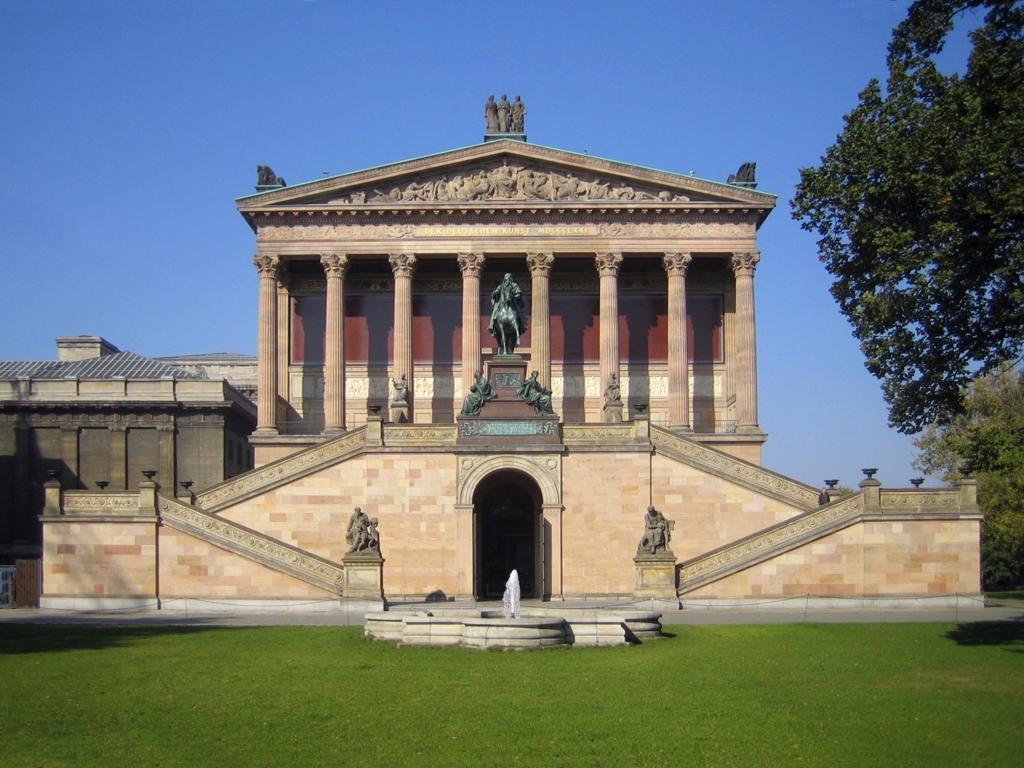About Alte Nationalgalerie
This neoclassical masterpiece, the Alte Nationalgalerie, stands proudly on Berlin’s Museum Island, its grand façade reminiscent of a Greek temple. The building, with its sweeping staircase and Corinthian columns, invites visitors into a world where art and history converge. Inside, the gallery houses an impressive collection of 19th-century art, including works by German Romantic painters, French Impressionists, and sculptors of the era. The architecture itself, designed by Friedrich August Stüler and completed in 1876, is a testament to the cultural aspirations of the German Empire, aiming to create a sanctuary for the arts.
The gallery’s collection reflects the tumultuous history of Germany, showcasing art that spans the rise of nationalism, the struggles of industrialization, and the quest for identity in a rapidly changing world. The building, having survived wars and political upheavals, stands as a symbol of resilience and the enduring power of art to capture the human experience. Its restoration after World War II and subsequent renovations highlight Berlin’s commitment to preserving its cultural heritage.
Right Where It Began
The Alte Nationalgalerie’s location on Museum Island places it at the heart of Berlin’s cultural landscape. This island, a UNESCO World Heritage site, is home to several of the city’s most important museums, each telling a part of the story of human civilization. The gallery itself was one of the first to be established here, marking the beginning of Berlin’s transformation into a center of art and culture. The decision to build the gallery in this location was part of a broader vision to create a cultural hub that would rival those of other European capitals.
Plan your perfect trip to Berlin with Travo! Download now and start exploring.
Marks of Time
The gallery’s architecture bears the marks of time, with its neoclassical design reflecting the 19th-century ideals of beauty and order. The building’s façade, adorned with sculptures and reliefs, tells stories of myth and history, inviting visitors to explore the narratives captured within its walls. Inside, the layout of the galleries, with their high ceilings and natural light, creates an atmosphere that encourages contemplation and appreciation of the art on display. The building itself is a work of art, a testament to the vision of its creators and the cultural ambitions of the era.
Stories in Stone
The sculptures and reliefs that adorn the Alte Nationalgalerie are more than decorative elements; they are storytellers in stone. The pediment, for example, features allegorical figures representing the arts, while the friezes depict scenes from German history and mythology. These details connect the gallery to the broader narrative of German culture, highlighting the role of art in shaping national identity. The sculptures within the gallery, from the romantic works of Johann Gottfried Schadow to the realist pieces of Auguste Rodin, further enrich this narrative, offering insights into the artistic movements that defined the 19th century.
Details That Speak
Inside the gallery, the artworks themselves are full of details that speak to the viewer. The brushstrokes of Caspar David Friedrich’s landscapes capture the sublime beauty of nature, while the vibrant colors of Claude Monet’s paintings convey the fleeting effects of light. Each piece tells a story, whether it’s the social commentary of Adolph Menzel’s depictions of industrial life or the emotional depth of Edvard Munch’s portraits. These works invite visitors to engage with the past, offering a window into the thoughts and feelings of the artists who created them.
Living History
Today, the Alte Nationalgalerie continues to be a living part of Berlin’s cultural scene. It hosts exhibitions that explore the connections between past and present, inviting contemporary artists to dialogue with the works of their predecessors. The gallery’s educational programs and events engage visitors of all ages, fostering a deeper understanding of art and its role in society. As a place where history and creativity meet, the Alte Nationalgalerie remains a vital part of Berlin’s cultural identity, a testament to the enduring power of art to inspire and connect people across time.

Map loading...
Location
1-3 Bodestraße, 10178, Berlin
